RADIUS PHOTO DV, SONY
DCR-PC7
& FIREWIRE
By John Henshall
The game could soon be up for
low-resolution digital stills cameras.
What chance would a brick-like camera with a fixed lens, limited
fixed storage and no means of checking the captured images have
against a sleek product with a 10-to-1 zoom-macro lens, 20-to-1 with
digital doubling, two colour LCD screens for both capture and replay,
a 25 fps motor drive, removable media capable of recording 90,000
images, the ability to record digital stereo sound and a processing
time of less than two seconds per shot?
This isn't a dream of the future. It's now.
Digital imaging is often regarded as
truly instant photography. There's no doubting its convenience if you
need just one or two images in a hurry but it takes almost as long to
upload a camera-full of images via the computer's serial port as to
pop into the High Street minilab and put a roll of thirty six through
the one hour service.
I have cheered the advent of many low-resolution digital cameras
in these pages, not because they will displace our Nikons,
Hasselblads and Sinars but because each development brings new
digital facilities to some professional niche and keeps us aware of
and receptive to the way things are going. And it's often the
seemingly amateur devices which tempt and inspire professionals to
try things new. In fact, it's strange but true that the majority of
enquiries I receive daily from professionals relate to such
lower-cost, lower-performance products. These are the products which
professionals use to dip their toes in the digital water to gain
experience without risk.
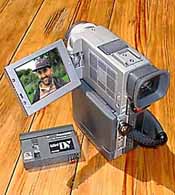 But,
although innovation has abounded, not one product has learned enough
from the mistakes of others not to make similar mistakes of its own.
Who would have thought it possible that, two years after the advent
of the first digital camera with a colour LCD screen we would still
see cameras which have an unshaded, power-hungry LCD screen as the
only means of composing a shot? Yet the camera described in the
opening paragraph is available right now - the Sony DCR-PC7E.
But,
although innovation has abounded, not one product has learned enough
from the mistakes of others not to make similar mistakes of its own.
Who would have thought it possible that, two years after the advent
of the first digital camera with a colour LCD screen we would still
see cameras which have an unshaded, power-hungry LCD screen as the
only means of composing a shot? Yet the camera described in the
opening paragraph is available right now - the Sony DCR-PC7E.
I have mentioned this camera before but now comes the time to tell
you about a development which makes acquiring images from such
digital video cameras very fast indeed.
The system is called FireWire, and it
looks set to replace SCSI as the new super-fast super-easy standard
by which peripheral devices such as digital cameras, scanners and
printers communicate to their host computers. It is likely to be
built into many computers from next year.
FireWire - also known as IEEE 1394 - overcomes most of the
idiosyncracies which beset SCSI. Unlike SCSI, it is 'hot pluggable',
which means that the computer does not need to be powered down when
devices are being connected or disconnected. It does not need
terminators, device IDs or heavy multi-cored cables. It uses only a
thin flexible cable to carry all the data - up to 200 megabits per
second, or 25 megabytes per second - enough for broadcast video. DV
camcorders compress the signals and need only 3.6 megabytes per
second for video, stereo audio, time code and commands - well within
its capabilities. Everything travels down the one FireWire cable -
separate sound cables are not required. You can easily daisy-chain
devices at the same time, so that they can be shared. In fact the
main limitation is the length of link between devices of 14 feet (4.5
metres). But with up to 63 devices connected and acting as repeaters,
FireWire could reach nearly three hundred metres.
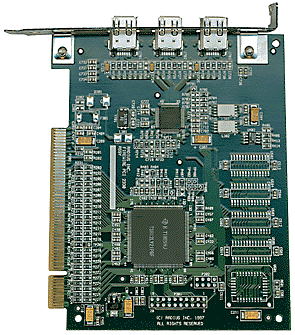 You
can take advantage of FireWire right now if you have a camcorder with
a FireWire output. Radius make the FireWire card which comes with a
special cable needed to connect the camera to the computer and
PhotoDV software - a Photoshop import plug-in which controls the
camcorder from the computer.
You
can take advantage of FireWire right now if you have a camcorder with
a FireWire output. Radius make the FireWire card which comes with a
special cable needed to connect the camera to the computer and
PhotoDV software - a Photoshop import plug-in which controls the
camcorder from the computer.
You will need a PCI Macintosh or clone running MacOS 7.6.1 or
later, QuickTime 2.5 or later and Adobe Photoshop 3.0.5 or later or
MicroFrontier ColorIt! 3.2.2 or later. I use a Power Macintosh
8600/250. Installation of the FireWire card and software is no more
than a five minute job. In fact, I was grabbing frames from my
camcorder well within five minutes of opening the box.
Under the preview window in the Photoshop plug-in is a slider
enabling you to set the preview image in one of three positions, from
Faster to Sharper. I find the computer fast enough to use Sharper at
all times. Below this are buttons for remote camcorder control of
normal Play, Search (for next shot change), Fast Forward and Rewind
(at 12x speed with picture - in effect searching 300 digital images
per second or 90,000 in five minutes), Slow play forward and reverse
at one-tenth speed (2.5 frames per second), and Step (one frame at a
time) in both forward and reverse. Under this, the precise
frame-accurate time code is displayed in hours, minutes seconds and
twenty-fifths of a second. It is thus possible to return to any
precise frame. Time and date of recording can also be displayed in
this box.
Important Note: To view the
Screengrab below at its full resolution, download it by dragging it
to your desktop and then open it in your own imaging
program.
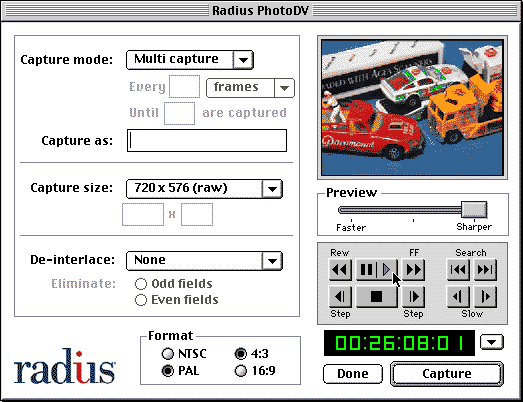
On the left is selection for both PAL (625 lines 25 frames per
second used in Europe) and NTSC (525 lines 30 frames per second used
in USA and Japan) and also for aspect ratio - 4:3 (1.33:1) and
widescreen 16:9. Capture can be set to One shot, Multiple shots (to
save time re-selecting the plug-in) or Auto every 'x' seconds until
'y' images have been captured - useful for time-lapse. Capture size
can be set to 680x510 (square) pixels, 680x544 (rectangular) pixels,
720x576 (the raw image from the camera), or interpolated up to
1024x768 pixels.
The final control is over de-interlacing to reduce the motion
artifacts between the two 'fields' (half 'frames') which are
interlaced together to make up a television 'frame'.
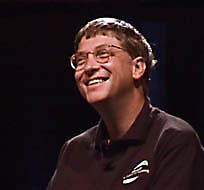
The system is so simple, effective and fast to use that it makes
you never want to go back to using a low resolution digital still
camera with slow serial interface. I had 90,000+ images of Bill Gates
to choose from on a 63 minute tape but it took me less than six
minutes to search them all for the best picture of him smiling. I
know no other way to search such an extensive resource so
quickly.
By way of comparison, I have
acquired the same frame of video in three ways. First the
conventional way, as a 'composite' video signal; second the slightly
better method, as an S-Video signal; and finally using Radius PhotoDV
to capture the digital signal direct from the camera. Although
capturing images in S-Video avoids PAL colour 'bleed', the biggest
improvement in quality is seen when capturing the picture by direct
digital means.
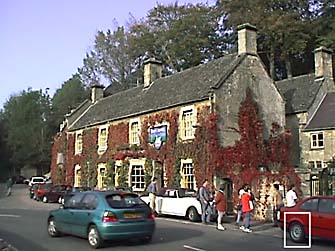
The original image showing the selected test area
on the right (boxed)



Left: Composite Video Centre:
S-Video Right:
Radius PhotoDV
I now use the small Sony DCR-PC7E
camcorder as a video notebook. It does not give the best DV picture
quality but it is the most convenient to carry around the world. Take
a look at the page which describes my recent sessions at Seybold
San Francisco
(http://www.epicentre.co.uk/seminars/seyboldsf.html) where you
will find small images of each of my fourteen guest speakers. They
are all action shots which would have required a very attentive
stills photographer - but all I did was put the camcorder on a
tabletop tripod and leave it running during the sessions. I captured
the still images later using PhotoDV.
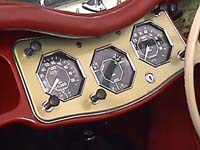
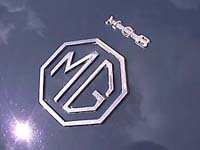
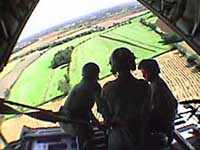
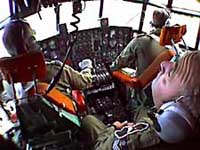
A selection of images taken on the Sony DCR-PC7E
digital camcorder and acquired by FireWire using Radius PhotoDV
software.
Although I end here for the moment
the facilities offered by FireWire, Radius and others do not. Radius
MotoDV is stand-alone software which allows the acquisition of moving
images from the camcorder, in real time, by FireWire. And the hot
news is that Radius are about to release EditDV - a 100% digital
non-linear editor for $999. Rest assured, I will continue to keep you
abreast of these exciting, important and potentially profitable
developments.
For further information and pricing see the radius website at
http://www.radius.com
This article first appeared as "John
Henshall's Chip Shop" in "The Photographer" magazine, December
1997/January 1998.
IMPORTANT NOTICE
This document is Copyright © 1998 John Henshall. All rights
reserved.
This material may only be downloaded for personal non-commercial use.
Please safeguard the future of online publishing by respecting this
copyright and the rights of all other authors of material on the
Internet.


 But,
although innovation has abounded, not one product has learned enough
from the mistakes of others not to make similar mistakes of its own.
Who would have thought it possible that, two years after the advent
of the first digital camera with a colour LCD screen we would still
see cameras which have an unshaded, power-hungry LCD screen as the
only means of composing a shot? Yet the camera described in the
opening paragraph is available right now - the Sony DCR-PC7E.
But,
although innovation has abounded, not one product has learned enough
from the mistakes of others not to make similar mistakes of its own.
Who would have thought it possible that, two years after the advent
of the first digital camera with a colour LCD screen we would still
see cameras which have an unshaded, power-hungry LCD screen as the
only means of composing a shot? Yet the camera described in the
opening paragraph is available right now - the Sony DCR-PC7E. You
can take advantage of FireWire right now if you have a camcorder with
a FireWire output. Radius make the FireWire card which comes with a
special cable needed to connect the camera to the computer and
PhotoDV software - a Photoshop import plug-in which controls the
camcorder from the computer.
You
can take advantage of FireWire right now if you have a camcorder with
a FireWire output. Radius make the FireWire card which comes with a
special cable needed to connect the camera to the computer and
PhotoDV software - a Photoshop import plug-in which controls the
camcorder from the computer.








